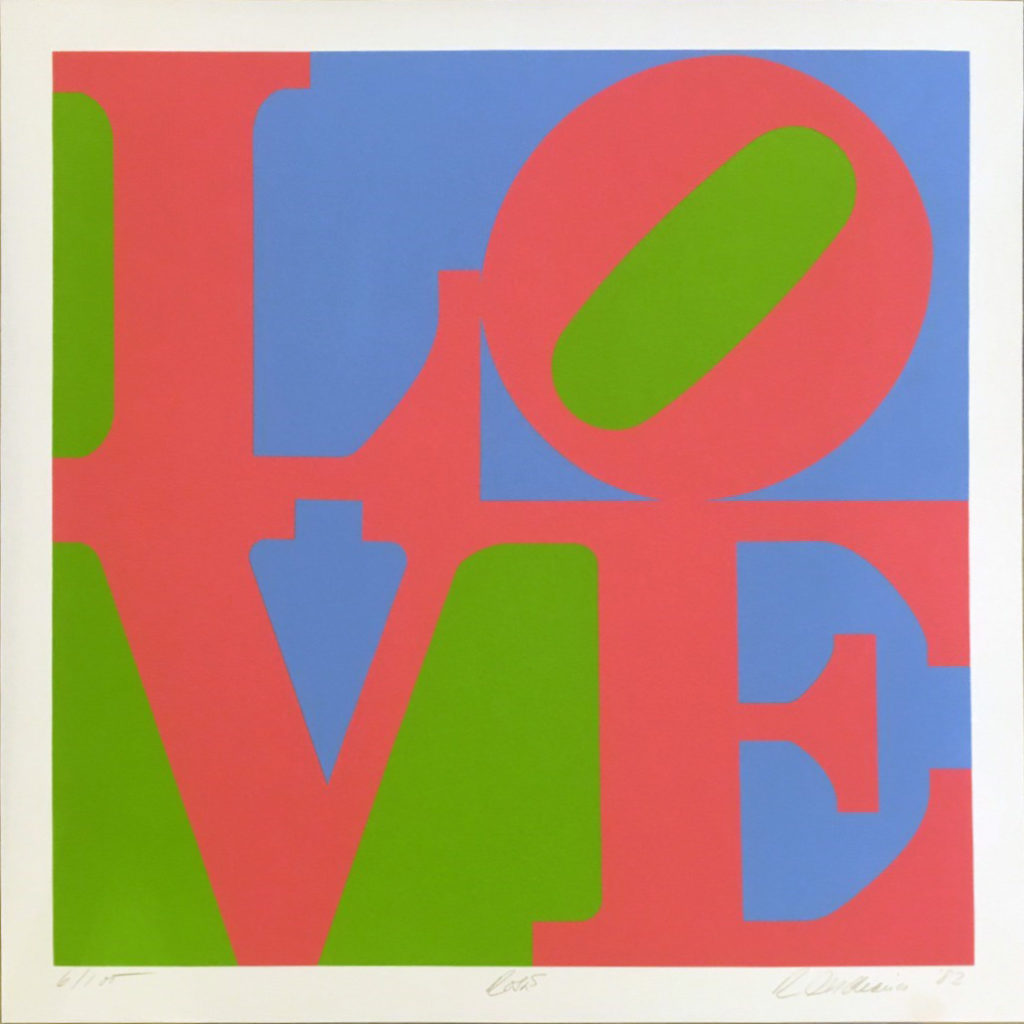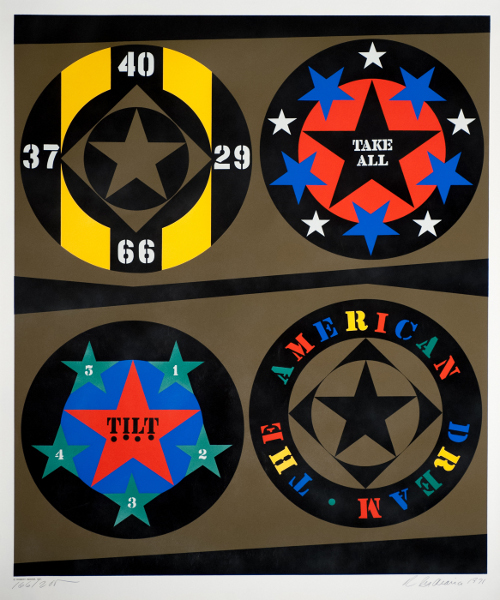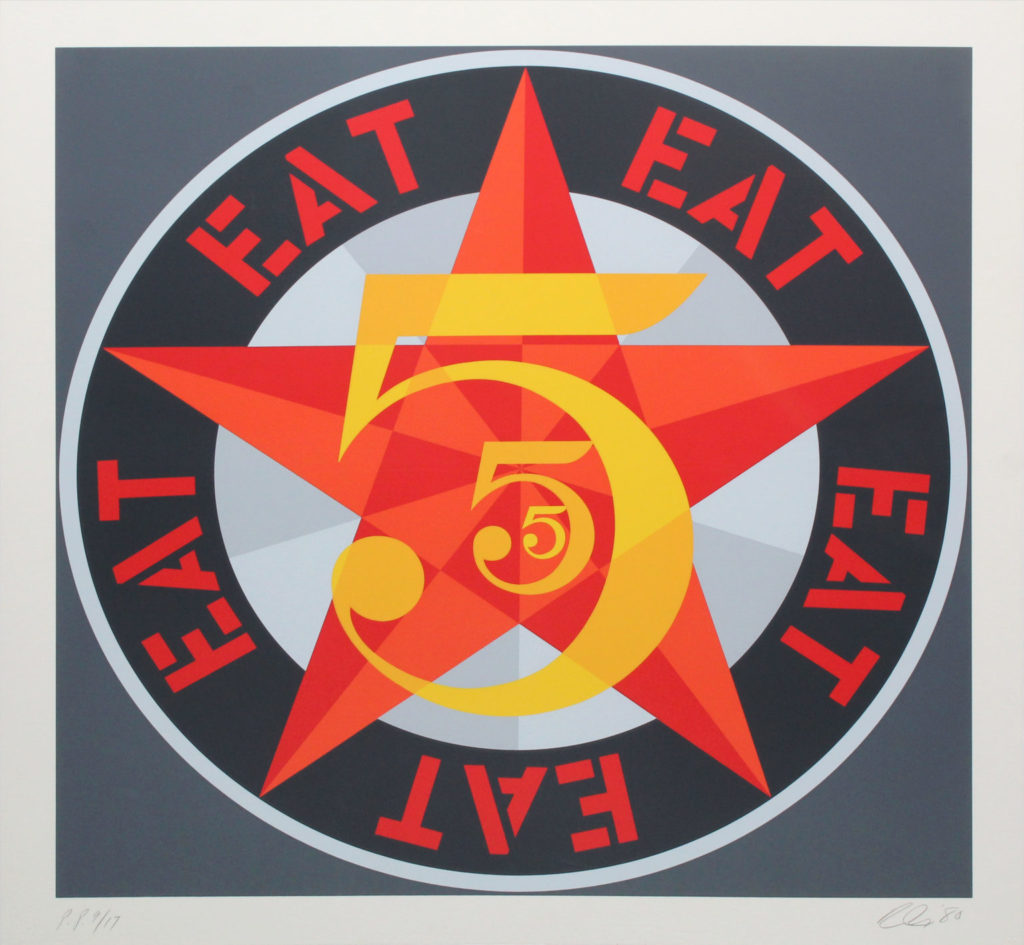Robert Indiana – The Art, Prints & The Man
Robert Indiana was one of the most politically engaged American artists of modern time, particularly noted for his 1960s work “LOVE”. Once described by the historian Robert Hughes as a romantic artist, Indiana himself was never comfortable with the consumerist elements of Pop Art.
Robert Indiana was born in 1928 in New Castle, Indiana. His paintings, which took the form of oil-company logos and other symbols of American corporate strength, were equally affectionate and critical of the extreme demands of consumption. Likewise, his work “LOVE” came to personify the hedonistic ethos of the 1960s.

Indiana’s art was informed by the 1930s Depression
The only child of Earl Clark and Carmen Watters, Indiana alluded to how the Great Depression shaped his early years.
His father worked for the oil company Phillips 66, and Indiana was strongly influenced in his early years by the corporation’s logo. According to Indiana, his mother was a fascinating, warm character who loved to explore the world. Indeed, by the age of 17, Robert Indiana had lived in 21 different houses. This incessant moving only stopped when his father left the family for another woman, later succumbing to a bullet wound courtesy of his mother.
Indiana kept the limelight away from his parents however his painting Mother and Father (1963-1966) showed a darker side to the familial relationship. Indeed, it depicted them standing individually on the fender of their Model T Ford, his mother bare-breasted and his father barefoot.
He considered being a funeral director
As a child Indiana witnessed the funeral of the notorious gangster John Dillinger (1903-1934) who had been killed in July 1934 by federal agents outside the Biograph Theatre. The opulence and solemnity of the occasion captured the youngster’s imagination, leading to his desire to be a funeral director. He deemed it to be the only business which never suffered, even in the Depression.
He formed a close bond with Andy Warhol
Robert Indiana graduated from the Edinburgh School of Art before moving to New York in the 1950s. There he became friendly with Andy Warhol (1928-1987), and through their shared childhood experiences of poverty, homophobia and deprivation, they soon became close allies.

Ellsworth Kelly inspired him to give up figurative painting
Moving to New York was a time of great change for Indiana. He changed his surname from Clark, and fell in love with the painter Ellsworth Kelly (1923-2015). Up until this moment, Indiana had thought of himself as an ‘anti-abstractionist’, but Kelly made him re-evaluate this.
EAT/DIE and LOVE
The discovery of a group of brass stencils completely by chance led Indiana to begin adding short words into his art work. One of his earliest examples was the famous 1962 piece EAT/DIE, which made an indirect statement on consumer culture that confirmed Indiana as a Pop artist. There is a deeper point to the work too, as ‘eat’ was the final word uttered by his mother before she died.

Indiana’s reservations about the impersonal nature of Pop Art were to continue throughout the 1960s, particularly in respect of the Vietnam War. In 1962 he had created the work Yield Brother in support of the philosopher Bertrand Russell’s campaign for nuclear disarmament, and later completed what is thought of as his most famous work, LOVE, which came to be seen as a representation of 1960s idealism. With the first two letters stacked on top of the other two, it looked as though the ‘O’ had been swept off its feet.
LOVE was crafted across several different formats, beginning life as a Christmas-card design for MoMA in 1965. It then took the form of screenprints and paintings from 1966, before taking sculptural shape in 1970 at the Indianapolis Museum of Art.
In 1978 Indiana left New York forever, taking up residence on the remote island of Vinalhaven in Maine, near to where his hero, the painter Marsden Hartley (1877-1943), had previously lived. Once there he became virtually reclusive and kept a low profile in the art world. However, he was still a prominent political activist, even working on Barack Obama’s Presidential campaign poster. He died in May 2018.
